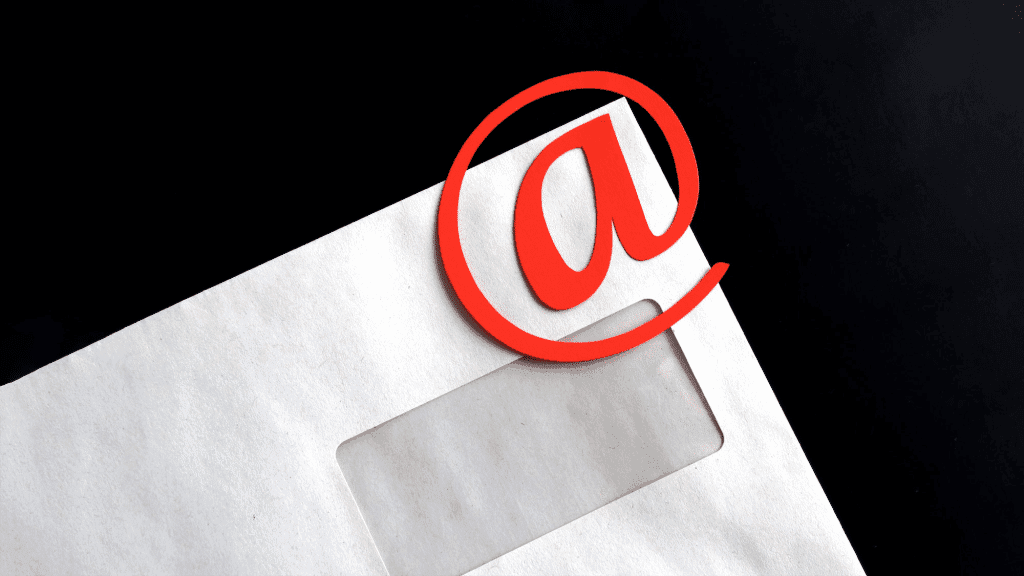You’ve crafted the perfect email. The subject line is catchy. The content is personal and offers real value. You hit send on your email campaign and wait for the replies to flood in.
But all you hear is silence. No opens, no clicks, nothing. It feels like you’re sending messages straight into a black hole.
The problem might not be your cold email. It’s likely your sending reputation. This is where email warmups come in, a critical step that too many people skip. Understanding how email warmups work is the difference between a successful campaign and a total flop.
Table of Contents:

- What Exactly Are Email Warmups?
- Why You Can’t Afford to Skip This Step
- How to Warm Up Your Email Account: The Two Main Paths
- Critical Mistakes to Dodge During Your Email Warmup
- How to Keep Your Email Account Healthy Post-Warmup
- Frequently Asked Questions
- Conclusion
What Exactly Are Email Warmups?
Email warmups are the process of gradually building a positive sender reputation for a new or cold email account. Think of it like making a new friend. You don’t ask for a huge favor the first time you meet.
Instead, you build trust over time through positive interactions. The email warmup process shows email service providers like Gmail and Outlook that you’re a legitimate user, not a spammer about to blast out thousands of messages.
Years ago, this was all about volume. Today, email service providers are much smarter. They look at engagement. Are people opening your emails, replying, or marking them as important? Or are your emails getting deleted and sent to spam folders? These interactions are the foundation of the reputation of a sender.
A freshly created email account starts with no history, making this process vital. It is important to know that warming up a brand new email domain is a bigger job than warming up a new email on a domain that has been around. Both require a warm-up, but a fresh domain needs more time to build that initial trust and avoid deliverability issues.
Why You Can’t Afford to Skip This Step
You might be thinking this sounds like a lot of extra work for your email marketing. Why not just start sending cold emails to your actual leads, but at a slower pace? While that seems logical, a dedicated warm-up process is specifically built to protect and improve your deliverability.
Even a great cold email campaign can have a low reply rate or open rate. It only takes a few recipients marking you as spam to get your account flagged. This is why a proper warmup strategy is so important for sending cold emails.
Build or Repair Your Sender Reputation
Every freshly created email account starts with a neutral reputation. From that point on, every action you and your recipients take helps define your sender score. The warm-up process involves creating a history of positive activity.
Sending a few emails a day and getting replies looks like normal human activity, which builds a positive email reputation. On the flip side, sending hundreds of emails that get ignored will damage your score. If it drops too low, email providers will just stop delivering your messages to the primary inbox.
Email warmups systematically create that positive engagement history. This works whether you are starting from scratch with a new email address or trying to fix a reputation you accidentally damaged. The goal is to gradually improve your standing with all service providers.
Improve Your Email Deliverability

Let’s be honest, sales emails often contain things that spam filters look for. Including a link to book a demo or an image to grab attention can raise red flags. This is because spammers also use these tactics to hide malicious intent.
Spam filters are cautious and might see your perfectly harmless calendar link as a potential threat. A great email deliverability warmup shows these filters that your content is safe. You can follow some email deliverability best practices to help.
The real power comes from the warmup. When you use your actual email templates during the warmup process, you teach the filters a lesson. You’re showing them that emails that look like yours, with your links and your images, get positive engagement. This improves email deliverability and tells them your messages should have good inbox placement.
Scale Your Outreach Without Getting Blacklisted
It sounds backward, but starting slow helps you scale faster. A manual email warmup can get your account ready in about two to three weeks. After that, you can start your outreach, slowly increasing the number of emails you send each day.
A proper warmup builds a buffer of positive history, making your account more resilient when you start your cold email campaigns. Without a warmup, you might send emails for weeks with terrible deliverability and not even know it. A couple of complaints could land your email domain on a blacklist, making it incredibly difficult to reach anyone.
A structured approach with a gradually increasing number of emails is the correct way to proceed. Here is a sample schedule to illustrate how you might gradually warm your account over a few weeks:
| Day | Emails Sent per Day | Ramp-Up Increment |
|---|---|---|
| 1-3 | 10-20 | +2 emails/day |
| 4-7 | 20-30 | +3 emails/day |
| 8-14 | 30-50 | +3-4 emails/day |
| 15-21 | 50-80 | +5 emails/day |
How to Warm Up Your Email Account: The Two Main Paths
You have two main choices for warming up your email account. You can do it yourself for free, or you can use a tool to automate the whole thing. Both have their benefits and drawbacks.
The Manual Method: Slow and Steady
Doing it manually gives you complete control, which some people prefer. The process is simple. You start sending emails to people you know, which gradually improves your standing.
This includes your other personal email accounts, colleagues, friends, and family. The goal is to get a variety of providers on your list, like Gmail, Outlook, and Yahoo. This helps you build a good reputation across different platforms and with different email service providers.
Remember, engagement is everything. You have to ask them to open your message, send a reply, and perhaps mark it as important. If an email lands in spam, they need to move it to the inbox to signal that it was a mistake. This method is free, but it’s slow and requires favors from many people and a lot of work maintaining conversations.
The Automated Method: Fast and Efficient
If you don’t have the time or a network of helpful friends, an automated email warmup tool is a great option. You connect your email account to the email service, and it handles the rest. These tools use a network of real email inboxes that automatically send and reply to each other.
This is a much faster and more hands-off way to build a strong sender reputation. An effective warm-up tool sends messages, gets replies, and rescues emails from spam folders for you. The whole warmup inbox interaction is completely automated.
You have to choose your tool wisely. Before you sign up, check if they use real email accounts and if the messages are coherent. The quality of the warm-up service directly impacts your sender reputation, so look for a reputable provider. Many offer a free trial or a 14-day free trial to test their platform.
Critical Mistakes to Dodge During Your Email Warmup

A warmup process can easily go wrong if you’re not careful. Avoiding these common errors will make sure you are actually helping your reputation, not hurting it.
- Sending Too Many Emails Too Soon. This is the most common mistake. Eagerness can get you flagged as a spammer instantly. You must start small and increase your volume gradually.
- Ignoring Engagement. Simply sending emails is not enough. The replies and positive email interactions are what build your reputation. A warmup without engagement is mostly useless.
- Being Inconsistent. Sending 10 emails Monday, zero on Tuesday, and 50 on Wednesday looks suspicious. A consistent, daily sending pattern looks much more natural and helps build trust with providers.
- Using Bad Email Content. Don’t use spammy words, excessive links, or poorly formatted HTML in your warmup emails. Keep the content clean and professional, just as you would for your real email campaigns.
- Skipping the Technical Setup. Before you send a single email, make sure your technical email authentication is in place. Setting up SPF, DKIM, and DMARC records tells providers that you are who you say you are. This is a technical step, but learning more about what DMARC is can help.
How to Keep Your Email Account Healthy Post-Warmup
Finishing your initial warmup doesn’t mean the work is done. Maintaining a healthy sender score is an ongoing process. Think of it like fitness; you can’t just work out for two weeks and expect to stay in shape forever.
You need to keep an eye on your email health. This means monitoring the key metrics that tell you how your emails are performing. Tracking these numbers gives you an early warning if things start to go wrong with your future cold email efforts.
You don’t need to get lost in spreadsheets. Just focus on a few core metrics you can find in most email tools. For a breakdown, you can review this overview of important email metrics to get started.
Many people find success by keeping their warm-up tool running at a low volume in the background, even while sending live campaigns. The guaranteed positive engagement from the warmup messages helps balance out the lower engagement rates that are natural with cold outreach. This provides a steady stream of good signals, keeping your reputation stable for the long term.
Frequently Asked Questions
Here are answers to some frequently asked questions about the email warmup process. These are common concerns for people new to email outreach.
How long does the email warmup process take?
Generally speaking, a proper email warmup takes about 2-4 weeks if you are consistent. For a freshly created domain, it is better to allow for a longer period, perhaps 8-12 weeks, to establish a solid sending reputation. The goal is to gradually increase the sending volume to mimic human behavior.
Can I warm up multiple email addresses at once?
Yes, you can and should warm up multiple email addresses if you plan on sending a high volume of emails. Using an email warmup tool makes this much easier to manage. Warming up several accounts under the same domain spreads your sending load and reduces the risk of any single account getting flagged.
What happens if I stop the warm-up process?
If you stop warming up your email address and don’t send any emails for a while, your sender reputation can cool down. When you start your next cold email campaign, you might see deliverability issues. It’s a good practice to keep a low level of warm-up activity running continuously to maintain a positive email reputation.
Is an email warmup tool better than doing it manually for a cold email campaign?
For a serious cold email campaign, an email warmup tool is almost always better. The manual process relies on the goodwill of friends and colleagues, which is not scalable or reliable. A tool provides consistent, automated engagement that efficiently builds and maintains the reputation needed for effective outreach.
Does an email warmup guarantee my emails won’t land in spam folders?
No, a warmup does not offer a 100% guarantee. However, it significantly increases your chances of landing in the primary inbox. Factors like your email list quality, content, and recipient engagement still play a large role in how providers rate email messages. A warmup is one crucial piece of the larger deliverability puzzle.

Conclusion
Email warmups might feel like an annoying delay when you’re excited to launch an email campaign. But they are a foundational part of any serious outreach strategy. It is the behind-the-scenes work that helps your carefully written emails get seen by your prospects.
By taking the time to build a positive sending reputation, you are setting yourself up for better deliverability with Apello Warmup Services. This also leads to more successful campaigns down the road. Ultimately, a successful deliverability warmup means your messages land in the inbox, where they belong.


